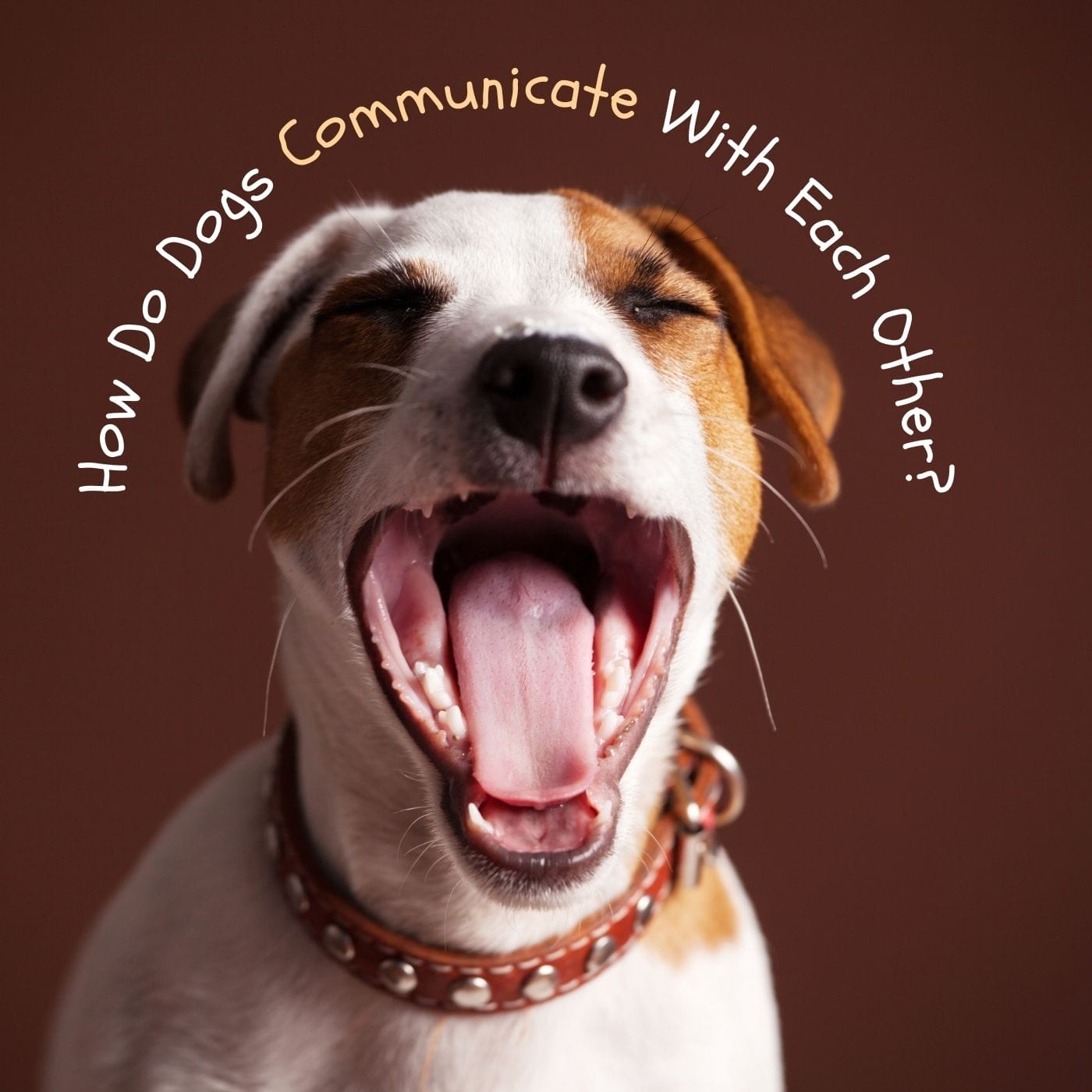Have you ever stopped to think about how dogs communicate with each other? Understanding canine language makes a big difference in the daily life of a family with pets. Communication is essential for a good relationship between animals, pets, and humans.
How Do Dogs Communicate With Each Other?
Owners can often misinterpret the dog’s bodily signals. Although it sounds simple, canine communication can be pretty complex, as they express themselves differently.
The primary forms of canine language are olfactory, auditory, and visual communication. So that you understand all about this, we’ve gathered some information that will make you know everything your little dog wants to say to the other dogs you meet.
How does olfactory communication work in canine language?
Olfactory communication is one of the main forms of language among dogs. Possibly, this is one of the most difficult forms of communication for us humans to unravel, mainly because we don’t have the same ability to smell as they do. However, with the exhaled smells, dogs can transmit information such as age, sex, disease, and even if the female is in heat or not.
This form of communication is only possible because of pheromones, chemical substances found in different areas of the dog’s body.
They can capture these substances thanks to Jacobson’s organ, which is in the nasal cavity and is responsible for passing them to the brain.
In addition to direct olfactory communication, when a puppy approaches another and sniffs their buttocks or cheeks, canine language through smell can also occur indirectly, as information can be conveyed through the smell of urine and saliva doggy. In this way, a dog does not need to contact the other directly to transmit information. This explains why dogs spend the entire walk sniffing every street corner.
Dog bark: how does furry auditory communication work?
The ability to emit sounds is one of the great pillars of canine language. As a result, your Furbaby has a large repertoire of vocalizations that can be repeated in different contexts.
Therefore, paying attention to the dog’s bodily signals is also important to understand what he is trying to convey.

See below for the most common vocalizations and their meanings:
The Different Canine Languages
Dog barking:
it can occur for different reasons, and body language must be associated with contextualizing the meaning of the action.
The dog can bark either to show euphoria in a game or to warn someone else not to invade its territory.
Dog howl:
This vocalization is instinctive and comes from the wolves’ heritage, which uses the howl to locate other members of the pack, coordinate hunting, and individual recognition. The howling can also be used if the dog is lost or the tutor is away.
Because of domestication, not all dogs are capable of howling.
Growl:
It indicates that the puppy is bothered by something or is feeling threatened.
Whimpering: is a vocalization that works as a request for help, very common in puppies.
Shout:
Used when the dog is frightened or when it is in great pain.
Sigh:
The puppy tends to sigh to relax after a situation of great stress or disappointment, after not getting something they expected.
Panting:
This happens when a dog is very tired, hot, or stressed.
Visual Language: What is the Meaning of Dog Body Signs?
The visual language of dogs is all gestures, postures, and body movements that express their intention. Often, to distinguish what the dog’s bodily signals mean, we need to associate them with other senses, such as vocalization. Check out the meaning of some common body movements:
Relaxation:
The ears are up (but not pointing forward), mouth slightly open, tail down and motionless.
Fear:
The tail between the legs, ears down, and the head and whole body tilted down.
The aggressiveness with intent to threaten or attack:
Notice the hair on the back, tail up, ears erect, pupils dilated, teeth bared, body rigid and leaning forward.
Defensive aggression:
There will be legs slightly back with tail between, ears back, and dilated pupils, mouth wide open, nose wrinkled, body tilted slightly down and back.
Canine Language: do dogs really understand each other?
Despite the instinctive aspect of canine language, their life experiences influence how dogs communicate.
In this case, a puppy that has not had contact with other dogs since a puppy tends not to fully understand the communication of other dogs, opening up more conflicts and misunderstandings.
Therefore, dog socialization should start early for better results. This way, the pet will understand the proper form of communication with other animals and not present problems during interactions.
You May Like To Read Animal Telepathy and Other Spiritual Gifts
To learn more about Animal spirituality, visit and subscribe to Ministry Earth Magazine
Click HERE to Connect with your Daily Horoscope on OMTimes!
Visit Our Astrology Store for Personalized Reports
About the Author
Ministry Earth is a collective Awareness-Raising, Perception-Building Initiative from Humanity Healing International, Cathedral of the Soul Educational outreaches created to introduce the perspective of Ethical Consciousness and Nonhuman Personhood to its Animal & Eco Ministries. Ministry Earth is a Service-Oriented Initiative, and its Magazine is a Copyrighted Publication of OMTimes Media, Inc. Broadcasting and Publishing House. https://ministryearth.com/
OMTimes is the premier Spiritually Conscious Magazine. Follow Us On Facebook, Twitter, Instagram, Linkedin, Pinterest, and Youtube
Ministry Earth is a collective Awareness-Raising, Perception-Building Initiative from Humanity Healing International, Cathedral of the Soul Educational outreaches created to introduce the perspective of Ethical Consciousness and Nonhuman Personhood to its Animal & Eco Ministries. Ministry Earth is a Service-Oriented Initiative and its Magazine is a Copyrighted Publication of OMTimes Media, Inc. Broadcasting and Publishing House.








